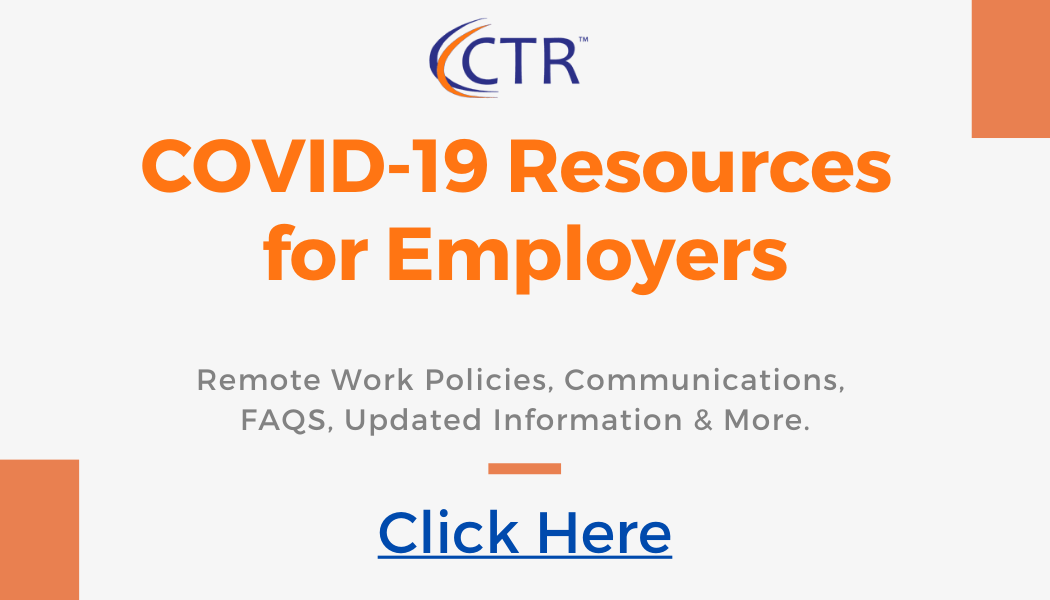By now, small businesses across the country have applied and are hopefully starting to receive their funds under the Paycheck Protection Program. This scheme under the CARES Act provided billions of dollars in desperately-need relief to countless sectors of the American economy. However, while we can all breathe a little easier for a while, the looming question of loan forgiveness or repayment is bound to be on most of our minds. Here are few a things to know about the Paycheck Protection Program loan forgiveness stipulations.
While every organization’s situation is unique, we’ve done our best to field some of the most overarching concerns. CTR recently recorded a webinar that gets into some of the specifics. You can watch it below, or download the slides here.
A Loan in Name Only (for the most part)
While the SBA has issued their official guidance, there are still plenty of questions looming. Simply put, as long as organizations use the money for its intended purposes, the funds allocated under the PPP loan do not need to be repaid. As a reminder, these areas include 8 weeks of payroll costs, mortgage interest, and rent/utilities. This has probably led a lot of folks to another question. If the debt is to be completely forgiven, doesn’t that create taxable income? Fortunately, under the stipulations of the CARES Act, this loan forgiveness is not taxable.
While the parameters of what companies can you the money for are pretty restrained, any funds used for other purposes will need to be repaid within 2 years (with a six-month deferral) at an interest rate of 1%.
What are Considered “Payroll Costs” under the PPP?
While the terms of the program’s loan forgiveness seem pretty straightforward, many were quick to point out that the language surrounding “payroll costs” was a bit vague. Here’s what’s included within the Paycheck Protection Program’s definitions:
- Salaries, commissions, self-employment income for partners, and any other wages (such as tips) paid to employees (under $100,00 for each individual)
- Vacation, sick, maternity, and other forms of PTO
- State and local taxes
- Retirement benefits
- Health insurance premiums covered by employers
- Severance payments
Seems pretty cut and dry, right? Remember, we’re dealing with the federal government here. There are plenty of ambiguities and points that will probably need clarification. Until then, let’s look at some of the payroll costs not covered.
What Payroll Costs Aren’t Covered under the PPP?
Perhaps more importantly, the PPP does not cover the following, and loan funds used for these purposes will need to be repaid within the timeframe mentioned earlier. Paycheck Protection Program loan forgiveness does not extend to the following:
- Salaries and other compensation exceeding $100,000
- Certain imposed taxes under chapters 21, 22, and 24 of the IRS Code
- Payroll costs for employees who work/reside outside of the country
- Paid sick or family leave wages under Families First Coronavirus Response Act
Hopefully that makes things a tad clearer, although we’re sure you still have plenty of questions. These are simply the widest parameters and experts are still trying to interpret the language of the Act. Hopefully the SBA clears some of this up ASAP.
PPP Loan Forgiveness Isn’t a Sure Thing
You’ve probably explained the PPP to your family and friends and they’ve probably quipped something like, “oh, so it’s free money?” Boy, wouldn’t that be nice. While adhering to the stipulations of the PPP means your loans will probably be forgiven, it’s not entirely in your hands. Every organization that takes out a PPP loan is subject to the institution that issued the loan. Employers will be required to provide their lenders with various documentation and failure to do so could mean your loan isn’t forgiven.
After all required documentation is provided to your lender, they ultimately have the final say on whether or not your loan is forgiven. Your lender has 60 days to render its decision, but again, it’s their call. While this adds a little more precariousness to the situation, staying within the guidelines and calculating your repayment now could save you from a few surprises later on.
Looking for More Info on Paycheck Protection Program Loan Forgiveness?
There’s certainly a lot to unpack regarding PPP loan forgiveness, and a lot of scenarios that are unique to your business.
In the meantime, be sure to visit and bookmark the CTR COVID-19 Information Center to stay up-to-date.


